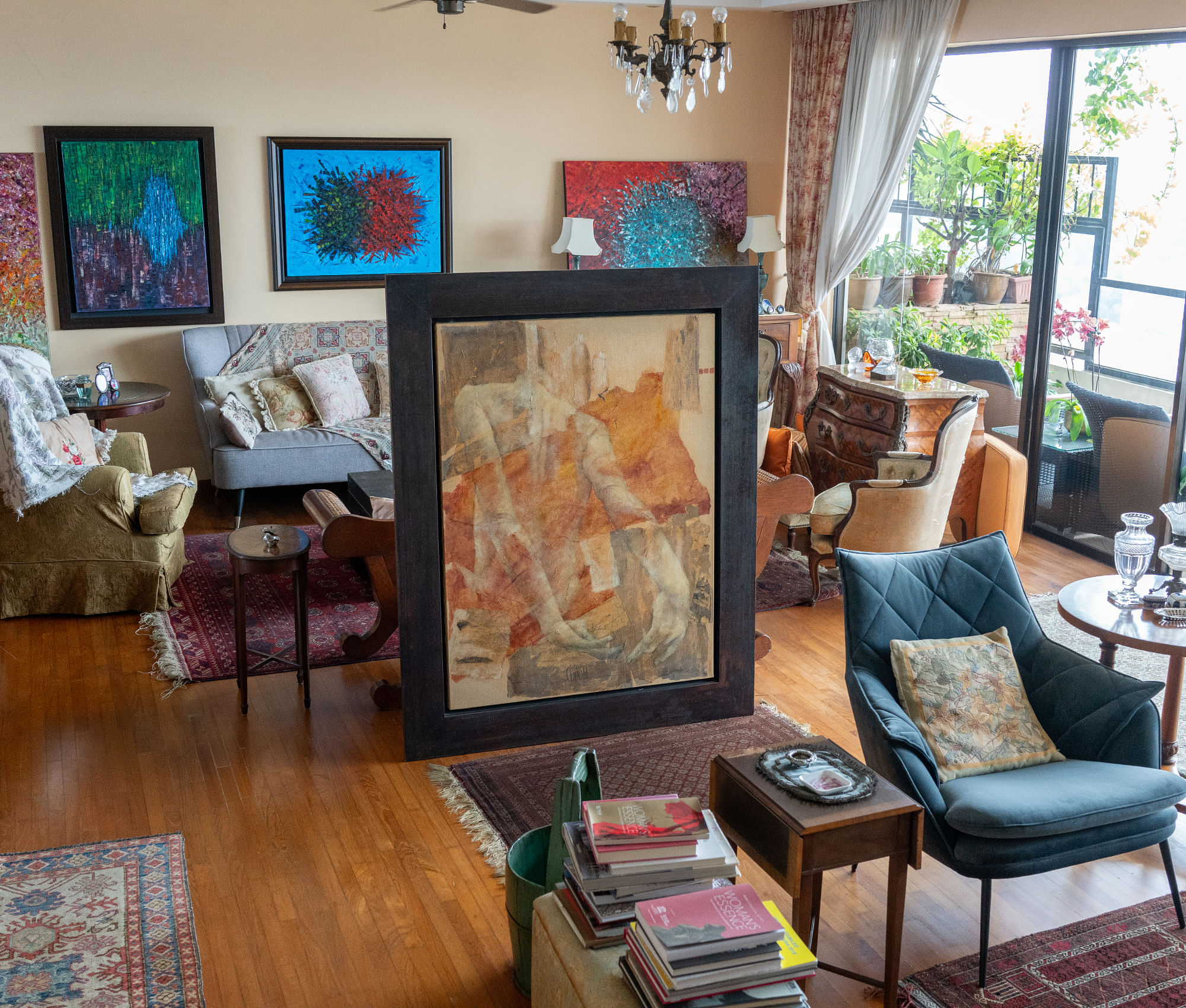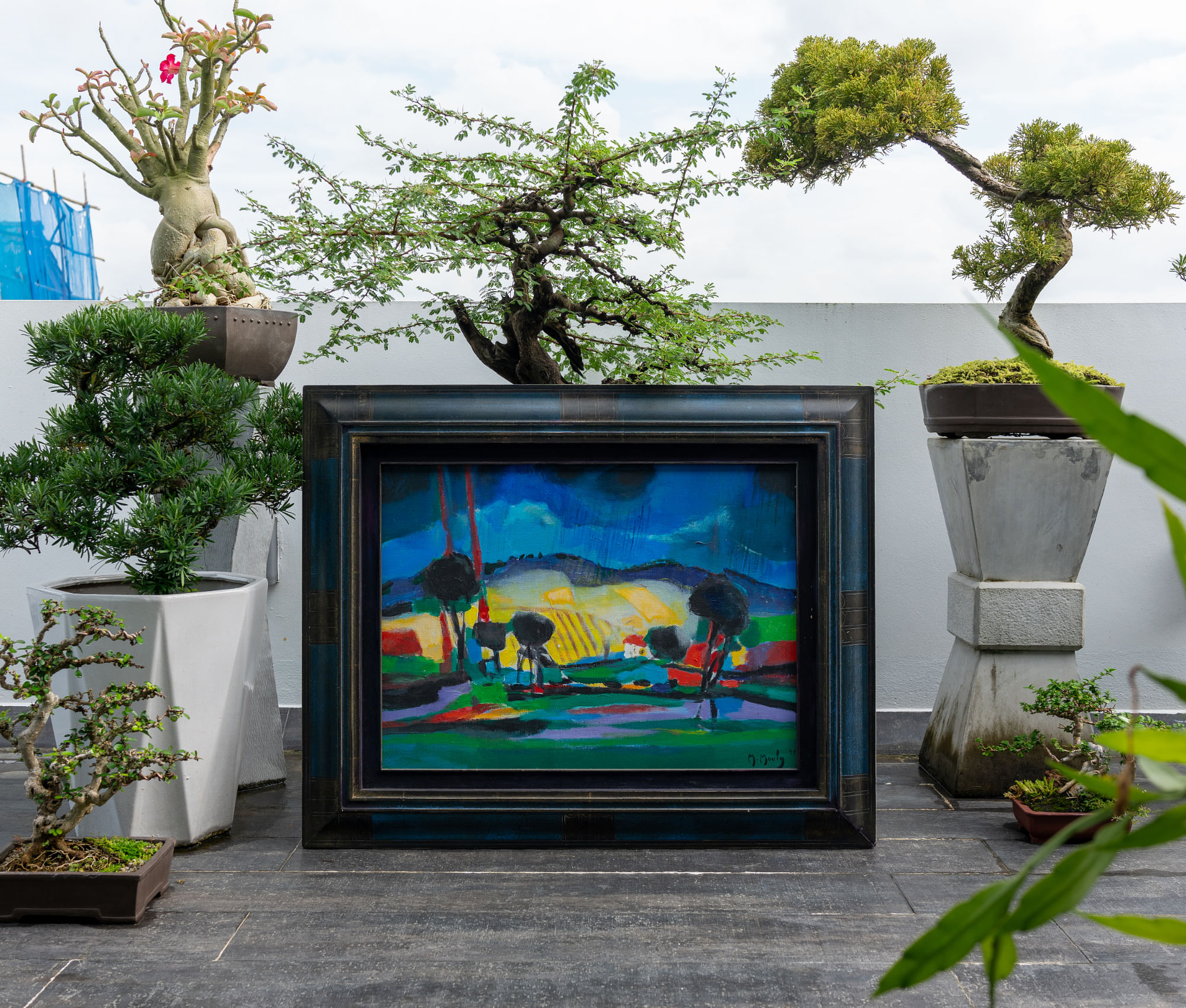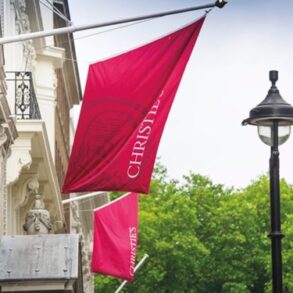One can say that the eight-month-old platform Art Again was born out of a dilemma. Co-founder Milon Goh had a friend whose art enthusiast mum was running out of space to display her art collection and thus eager to sell some of the pieces she owned. Typically, auction houses and private dealers could do the job for her. The catch? “They are unlikely to take in just any work… Factor in how they would have to pick up the work and put it into their storage facilities, which all cost money, and it wouldn’t make sense for bigger platforms to do so unless they have a buyer in mind,” explains Art Again’s other founder Chua Chingyi.
READ MORE: The Visual Arts Trends You Can’t Ignore In 2024
Should one succeed in getting the attention of these traditional players of the secondary art market, there’s also the issue of pricing, which is almost never determined by the owner of the art work. It’s a reality that someone like art enthusiast mum, whose lovingly procured collection included the likes of stunning landscape paintings by the late Malaccan watercolourist Jehan Chan, would be not-so-enthusiastic about.

Credit:Athirah Annissa
Arts manager Chua Chingyi (in foreground) and former lawyer Milon Goh (behind) are the latest disruptors to the secondary art market with their online platform Art Again, which helps those who want to sell artworks that they own do so in a democratic fashion. Not unlike consumer-to-consumer platforms such as Craigslist, it lists a diverse range of art that are not necessarily by established artists and sellers get to decide on the retail price.
Enter Art Again, which Goh – a former lawyer – and Chua, who still holds a job as an arts manager, launched in May 2023. Meant to help folks such as the mother of Goh’s pal, the website (artagain.co) lists a diverse range of works by artists who aren’t necessarily blue chip or established, each accompanied by its description, condition and a personal story about it. (Said Jehan Chan painting, for example, was presented by none other than the artist’s daughter and purchased directly from his studio because art enthusiast mum was “moved by the subject and colours” and already had another of his works.) Perhaps even more importantly, Art Again puts the power of pricing each work in the hands of its owner with details about transportation and other logistics to be discussed between seller and buyer privately and separately.

Credit:Art Again
Pictured here is one of the nearly 200 works in the inventory of Art Again: a 2007 mixed‐media work by French post‐war artist Viviane Cisinski titled Nuances Primitives.
In a way, this democratic approach of retailing art brings to mind the likes of consumer-to-consumer platforms such as Carousell and Criagslist except that it’s far more tasteful – and we’re not referring only to the website’s minimalist chic design that makes navigation a breeze. Goh and Chua, both of whom are in their late 20s, visit each seller in person to not only appraise the condition of the work to be sold, but also photograph it on site stylishly for the website. (To date, they have nearly 200 works in their inventory, all of which remain with their owners until sold.) These services and the listing of the work on Art Again come at no charge – the platform takes a commission of 15 per cent of the sale price only if a sale happens. With such dedication and transparency, the hope is to make sure art is never out of reach for the everyday collector, says Goh.
Here, he and Chua share more about how they’re making the art collecting experience a more accessible one.
READ MORE: In Singapore, An Exhibition To Bid Farewell To An Artist’s Family Home
What made the Art Again team decide to empower the buyers and sellers?
Chua Chingyi (CC): “In my line of work as an arts manager, I’ve encountered a lot of people who have asked me if there’s a platform where they can sell artworks. These works are not necessarily by big name artists of which sellers can readily go to an auction house, some prestigious gallery or a private dealer to handle the sale. We thus figured that there’s a need for a marketplace such as Art Again to create space for the everyday collector, or those who are curious about dipping their toes into buying art, but don’t know where to start.”
Milon Goh (MG): “There have been rare occasions when we get listings of works by blue chip artists. These happen usually because their owners find it so difficult to deal with all of the current market structures when trying to move the work that they decide to find an option that gives them control of the sale of their artwork.”
What do you mean by current market structures?
CC: “A lot of people feel a bit intimidated by the art industry because they don’t really know how it works. I don’t think anybody would deny that there is a sense of opacity in the art world. Art Again addresses this by making sure that there’s transparency. We walk our sellers through the process of listing an artwork on the platform and the prices that are openly listed are usually appointed by the sellers. We do give suggestions from time to time, especially if the sellers want our input, but the power is really with the seller regarding how much he or she wants to list it for. Some other platforms might advise their sellers to price their works at a certain amount that, for example, reflects their market value. That’s not to say such models are not good. It’s just not what we practise at Art Again.”

Credit:Art Again
Art Again provides more than just a space for art collectors to list works that they would like to sell. The team goes down to each seller’s location to photograph the artwork stylishly because “a well‐photographed and documented artwork goes a long way in the secondary market”, as well as to assess its condition.
From what we know, there seem to be few other platforms, if at all, that operate in the same way as Art Again.
CC: “There are always platforms or people who can help you sell works of art. You can even use Carousell or eBay and the power definitely lies with you. But can everybody take a really nice photo that will show the work that they want to sell in its full glory? Do you know what of the work to highlight? Can you do an accurate condition report on it? And what do you know about the state of foxing (which refers to discoloration caused by bacteria or mould). We at Art Again go down in person to the sellers’ homes to take photographs of the work and help evaluate its overall condition. We provide this service to help people elevate the listing of their works so that when somebody is browsing the Art Again website, he or she can have a very good understanding of the work’s dimensions and condition; how it looks within an environment and so on.”
MG: “There are many marketplaces where you can put the artworks you own up for sale, but we’re actually effective in getting them sold. This comes with growing a community where people know they can depend on our site to look for secondary art. We’re consistent with our listings and we prime artworks for the market. We also do all this without taking an upfront fee, but if the work sells, we take a 15 per cent commission.”
READ MORE: Artists Infuse Life And Creativity Into Peace Centre’s Final Act
CC: “With a lot of the other platforms or dealers, when you want to sell an art work, you need to consign it to them and they will usually take it away from you to store somewhere safe. For us, the only thing we take are photographs. The artwork is safe with you until somebody buys it.”
Tell us more about your community-building efforts and how these help the secondary art market.
MG: “We started doing community building events in the form of live-drawing sessions as a gentle, low commitment way of easing people into art. A lot of people might not have grown up exposed to art, but perhaps through our events, develop an interest and grow a little more curious about art. This eventually could lead them to become arts patrons. They don’t necessarily have to buy from us. They could be buying the works of young artists from graduate shows or support independent creatives. One key thing we’ve learnt through our events is that art is universal and timeless… People always say, ‘I can’t draw so I shouldn’t go for your drawing sessions’, but after visiting, they realise that they have innately some creative energy that just never had an outlet. That’s the crux of why we host our events: to give people the chance to experience that creativity in a safe and inclusive space.”

Credit:Art Again
Listings on Art Again come with a condition report and a little story written by the seller about his or her relationship with the work for both transparency and a human touch. For example, the seller of the work above – a 1999 oil painting by French artist Marcel Mouly titled l’Orage sur les Bles – had acquired it from a friend but ended up keeping it in storage, explaining the decision to sell it.
Traditional players in the secondary art market come across as more investment-driven when advising their clients. Conversely, Art Again espouses that the artworks you list should reflect what the sellers love and need not be by established names. Tell us more about this romantic vision of yours.
MG: “We recently surveyed 70 people and found out that personal feelings towards an artwork was the number one reason for buying art. This was followed by more practical considerations such as space constraints and price, and we felt very validated by this. We’re not romanticising the art collecting process. When buying art, emotional connection is what people care about. It’s not always about making an investment.”
CC: “We also try to highlight the seller’s story with each listing accompanied by text that’s written by the sellers divulging things such as how the works came to be in their possession, or what they mean to them. This adds a more personal touch to the story behind the artwork.”

Credit:Art Again
An untitled painting by Vietnamese contemporary artist La Ba Quan is reported to be in fair condition with “foxing and dust”.
Given your democratic way of working, what might make you reject a listing?
CC: “We recently said no to a couple of works that we felt were potentially offensive
due to strong religious iconography, but there are other factors too. Price isn’t the main one – we have works going for as low $200 and as much as $20,000. There are more practical reasons such as sizing. If an artwork is very big, for example, not many people have homes that can accommodate and display it to its full potential. Sometimes an artwork is in a deteriorated condition. All of these affect sellability.”
READ MORE: 12 Young Artists Share Why You Should See Their Works At Singapore Art Week
Through working on Art Again, what observations have you made about the local art collecting crowd?
MG: “Our clients start from the age where they’re starting to get financially stable and possibly getting their own spaces – around late 20s to early 30s and less so Gen Zers, who might be starting to develop an interest in art, but not quite looking to own any yet.”
CC: “I think Singaporeans like to buy local works. We’re seeing that local collectors do want to support local artists – both contemporary and historical. A lot of the Singapore painters whom we’ve listed have done well, often selling faster than works by regional or international artists.”
Portrait Photography Athirah Annissa Art Direction Jonathan Chia Hair Tan Eng Chong/Kizuki + Lim Makeup Sarah Tan
This article first appeared in the Jan/Feb Art Edition of FEMALE
This post was originally published on this site be sure to check out more of their content






